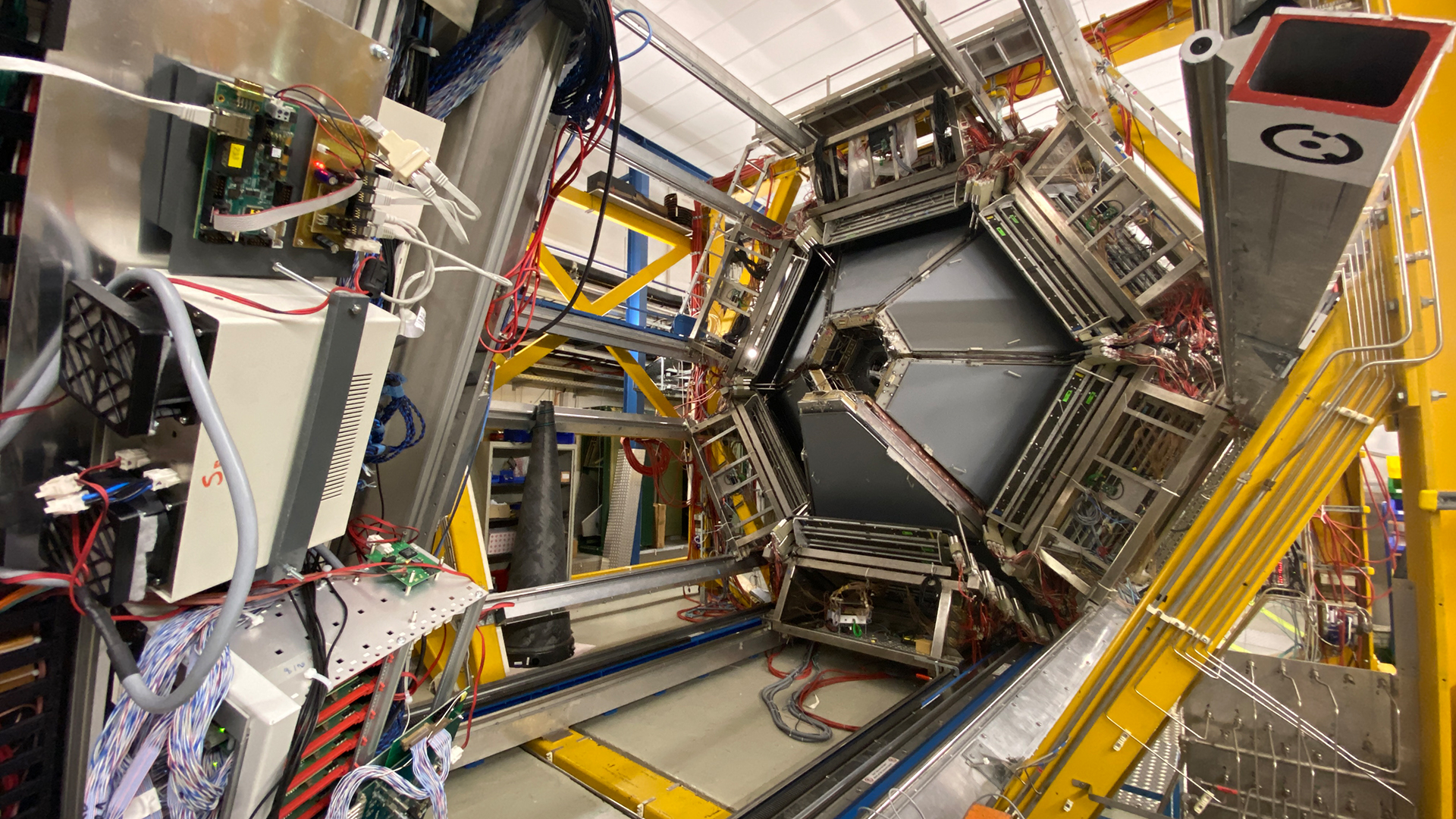in the middle
As of: 21/02/2023 7:09 PM
A new large particle accelerator is being built in Darmstadt. Unlike CERN in Geneva, heavy particles are accelerated there. In addition to basic research, there are also practical applications, for example in the treatment of cancer.
Access to the new particle accelerator is still hidden behind a large plastic plate. If you push it aside, the entrance to a huge underground laboratory will open. Scientists in Darmstadt are investigating the mysteries of the universe 20 meters underground.
A new particle accelerator has been under construction at one of the largest scientific construction sites in the world since 2017. The concrete used here would be enough for eight football fields in Frankfurt, and the iron for nine Eiffel Towers.
600,000 cubic meters of concrete and 65,000 tons of steel
The circular tunnel of the art facility has already been built, as well as some other large halls. Scientists call one of them the “cathedral”. Radiant white, like the other rooms, awaits the installation of a complex device, in which 2028 ions will be accelerated almost to the speed of light and made to collide.
#right in the middle: The new particle accelerator in Darmstadt
Alex Jakubowski, HR, Daily Topics 10:15 PM, Feb 21, 2023
The researchers fired the particles at samples of material and could briefly produce cosmic matter at the tiny point of collision. In principle, they want to research the consequences of the Big Bang and find out how new particles and matter are formed.
The facility under construction, called FAIR (Facility for Proton and Ion Research), is connected to the GSI Helmholtz Center for Heavy Ion Research, which was founded in 1969. The linear accelerator located there would later boost the ions to core velocity before they reach nearly the speed of light in the new circular accelerator. , which is approximately 300,000 kilometers per second.
A linear accelerator at the GSI Helmholtz Center for Heavy Ion Research. Here the ions are brought to the base velocity.
Photo: Alex Jacobowski
“Unimaginable,” Ingo Peter admits. He is a physicist himself and works in the press office for FAIR and GSI. “We can’t imagine and understand that either. But we can handle it, we can do research and also implement it technically. But real real understanding, at heart, no one can do that,” says Peter.
New items – including Darmstadtium
In the past, scientists have discovered six new elements from the periodic table in the facility already at GSI. Elements 107 to 112 now complete the table known from the school – including the Darmstadtium. It was created by the fusion of two chemical elements.
“We will also use the new particle accelerator to produce matter, as it only happens in the universe. This way we can explore the universe here in the laboratory on Earth,” says Ingo Peter.
3,000 scientists from more than 50 countries will conduct experiments at the facility in the future. In addition to basic research, already developed applications must also be modified. From 1997 to 2008, for example, 440 cancer patients were shot using the ion beam generated here and brain tumors were treated in this way. This is now done with a much smaller system, for example at the University Clinic in Heidelberg.
Cancer research advances
Researchers in Darmstadt are now working on a way to bombard mobile tumors, for example in the lungs, with an ion beam. To do this, the plane must be precisely aligned and adapted to the movement of the lungs caused by breathing. “We have to move the ion beam coming from the particle accelerator with the movement of the tumor,” explains physicist Peter Peter.
Two employees analyze tissue samples that have been bombarded with an ion beam.
Photo: Alex Jacobowski
In addition, scientists are working with the European Space Agency (ESA) on the effects of space radiation on astronauts, for example on trips to the Moon or Mars. It’s still a dream for the future, however: “People have done such missions, and our mission is to investigate the effects of this cosmic radiation,” says Peter.
To do this, scientists in the lab bombard cell samples with focused ion beams. The resulting damage should subsequently help develop proper protection for the astronauts. So science fiction could eventually become reality.

“Total coffee aficionado. Travel buff. Music ninja. Bacon nerd. Beeraholic.”







More Stories
Researchers detect extremely high-energy gamma rays
Anxiety disorders in old age increase the risk of dementia
Researchers are particularly fascinated by these exoplanets.